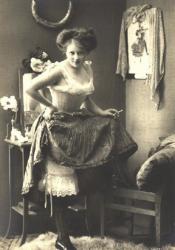Prostitution as a Working Class Occupation
In Victorian England, most women were supposed to be the breadwinners of their families. The Town Police Clauses Act of 1847 made prostitution illegal in public places. To make a living, they were expected to sell their bodies in the streets. The streets were often crowded with people. Children had lived on the streets. However, not all prostitutes were poor. There were three classes of prostitutes. The upper-class prostitutes were for the rich. In contrast, the lower-class prostitutes were only for the poor. The middle-class prostitutes were able to serve the rich and the poor. Prostitutes were even educated. Mostly the upper-class prostitutes. The lower-class prostitutes didn't know how to read or write.
In the earlier 1800s, there weren't many occupations available for women in England. Factory work and street vendors were hazardous work. Women who were smart and had job skills didn't make enough money to provide for their families. The only job that woman could make a lot of money from is prostitution.
Prostitution was the fourth-largest female occupation in the world. It was legal in England, but it was only illegal for prostitutes to gather groups in England's streets. Prostitutes also couldn't be drunk in public. If a woman was drunk in public, she could face up to a year in prison. Reformatories were also a place women had to go to when breaking the law. Reformatories were far worst than prison. It was rehab for prostitutes.
Sources
Aiken, Dianne. "Victorian Prostitution." British Literature Wiki. N.p., n.d. Web. 10 Feb 2012 https://sites.udel.edu/britlitwiki/victorian-prostitution/
Joyce, Fraser. "Prostitution and the Nineteenth Century: In Search of the 'Great Social Evil' https://warwick.ac.uk/fac/cross_fac/iatl/reinvention/archive/volume1issue1/joyce

